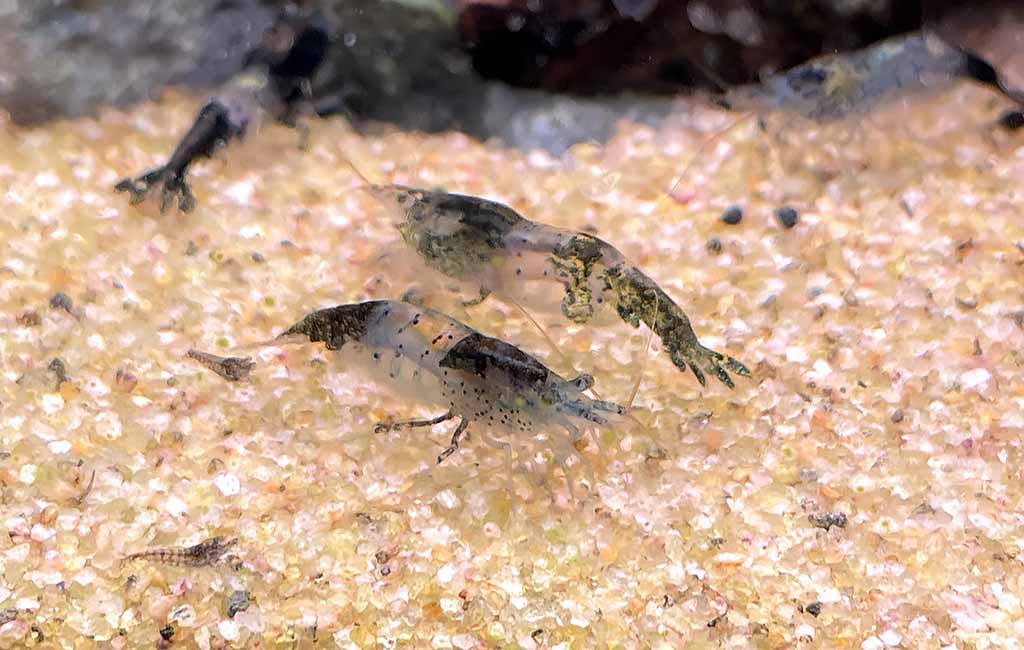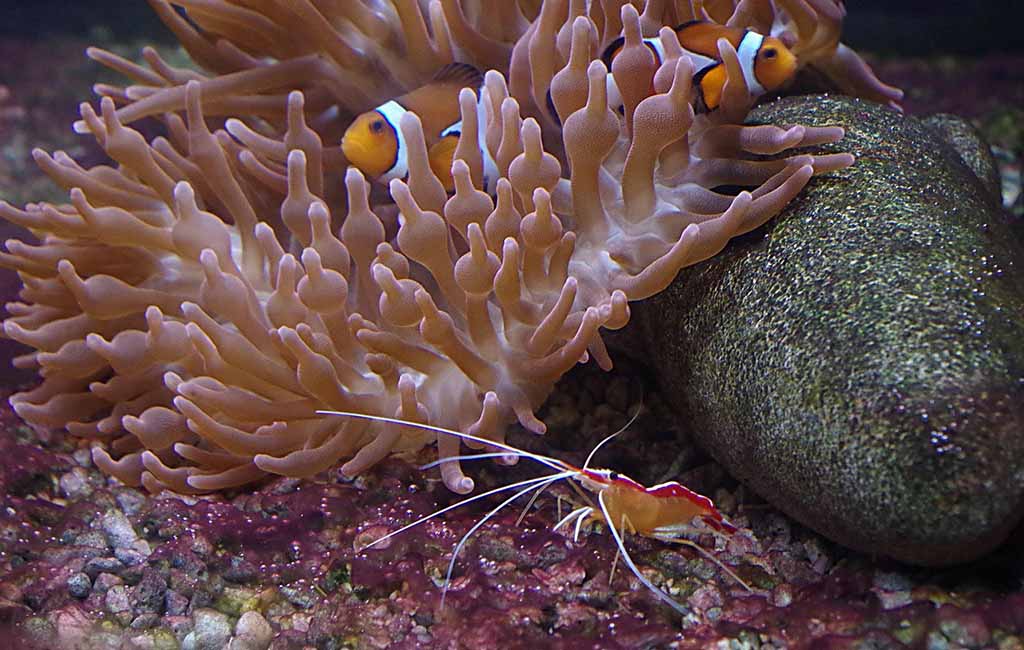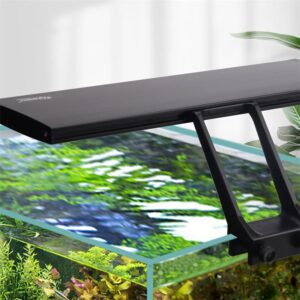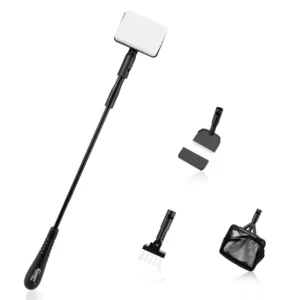Shrimps help to keep any community tank clean. They are a bottom-feeder. Generally, shrimps don’t have specific feeding requirements in a community tank. However, when you keep them in a shrimp-only tank, you must consider it. They are not a frequent eater. However, you need to prepare food for the shrimp aquarium to feed them.
Content Table
This article will address different shrimp food options for saltwater and freshwater shrimps. You’ll also learn about their nutrient requirement. You can make their feeding easier by growing plants in the tank. A list of such plants is also at the end of the article. Scroll down and make your aquarium journey easy.
Do Shrimp Need Food
No for the community tank, and yes for a shrimp-only tank. In a community tank, shrimps don’t need any specific feeding requirements. They feed on fish leftovers, algae, and biofilm. In a shrimp-only tank, they need food only a few times a week. They will survive until their health is good, and water parameters are optimal.

shrimp food
Shrimp Food
They have a diverse feeding menu. Their menu includes both plant-based and protein-based items. Usually, it includes:
- Shrimp pellets
- Flakes
- Algae wafers
- Blanched vegetables
- Brine shrimp
- Mosquito larvae
Plant-based items include Zucchini, spinach, and carrots. However, as mentioned, they don’t require specific feeding requirements in a community tank as they eat leftover food. These food items are for shrimp-only tanks. You only need to feed them a few times a week. However, remove the leftover food within an hour. Otherwise, it can damage the water parameters.
Freshwater Aquarium Shrimp Food and Nutrient
Saltwater and freshwater shrimp have a feeding difference. Freshwater shrimp diet consists of varied food items.
Primary Food Source
Vegetables
Blenched vegetables provide nutrients and extra fiber to the shrimp. You can feed spinach, zucchini, and cucumber. However, remember that they should be offered in small quantities. Moreover, remove the leftover food, remove after an hour.
Algae and Biofilm
Algae and biofilm are natural food sources. Biofilm contains bacteria, fungi, and microalgae. All of these things provide essential nutrients to shrimps.
Commercial Pellets/Food
These are specifically designed food items according to the shrimp’s digestive system. They have balanced nutrition, i.e., include proteins, carbohydrates, and minerals.
You can also feed them on algae wafers and seldom on frozen brine shrimps, daphnia, etc., as supplementary food items. These items will help to diversify the food items.
Essential Nutrients
| Nutrient | Impact on Shrimps |
| Calcium | Prevent molting
Essential for exoskeleton development |
| Proteins and amino acids | Support growth
Support tissue repair Note: It should be given moderately. |
| Vitamin C | Support Connective tissue development |
| Vitamins | Help in growth and the immune system |
| Trace elements (Mg, K, Fe, etc.) | Helpful in the metabolic process.
Optimize the health conditions |
How to Feed Aquarium Shrimp
Freshwater and saltwater shrimps have different feeding requirements. Generally, they don’t require specific feeding in a community tank. Here is a table that will comprehensively tell you how to feed your aquarium shrimps.
| Components | Ingredient | Saltwater Shrimps | Freshwater Shrimps |
| Protein | Fish meal
Krill meal Shrimp meal Insect meal Soybean meal |
Higer protein content | Moderate protein level
Food should contain higher plant-based ingredients to mimic grazing |
| Plant-based component | Spirulina
Seaweed Algae Pea protein |
Keep it low, as they don’t eat in their natural environment | Supply in a high proportion as it fulfills their natural desire |
| Lipids | Fish oil
Vegetable oil |
Moderate, but keeps it balanced with protein requirement | A moderate amount, as it helps to keep the metabolism functional |
| Vitamins and minerals | Vitamin A
Vitamin C Vitamin E Calcium Phosphorus Selenium |
Keep a balance of all, but emphasize the sodium to fulfill their marine nature | Keeping a balance of all but calcium is important, as it helps in exoskeleton development and avoids molting |
| Feeding Consideration | Feed in a small quantity
Crush the food into an adequate size Maintain water quality for better digestion Bottom-feeder shrimp food should have more parasites |
Mall quantity
Crush the food into an adequate size Maintain water quality for better digestion |
Aquarium Plant Safe as Food for Shrimp
Java Moss
It’s a moss that helps to fulfill the shrimp’s feeding requirements. It has abundant biofilm and microorganisms that provide the shrimps with a natural grazing experience. Moreover, it’s easy to grow in the tank. You can grow it with driftwood or rocks as supporting platforms.
Java Fern
It is a fern that also helps to fulfill the feeding requirement. It is a great option for low-light tanks. It hosts biofilm, which is food for shrimps. Moreover, it helps in fulfilling the nibling requirements of shrimps. You need to attach it with some driftwood or hardscape for growing in your tank. Avoid burying its rhizome in the substrate.
Anubias
Anubias is a flowering plant. Although shrimps do not graze on this plant supports biofilm growth. It requires less maintenance due to a slow growth rate. Moreover, it is a durable plant that can withstand shrimp’s nibbling. Moreover, it enhances the tank’s aesthetics with its flowers.
Christmas Moss
It’s another suitable moss plant for a shrimp tank. It offers an abundant grazing surface as it supports biofilm growth. It creates a natural habitat vibe in the tank. Moreover, it’s suitable for beginners as it requires less maintenance due to a slow growth rate.
Water Wisteria
Water sprite or Hygrophila Difformis is another home plant for the shrimps. It is common among aquarists as it offers hide-and-play space for the shrimps. This is due to its dense and lush growth. It’s easy to propagate, trim the plant, bury the offshoot in the substrate, and the rest is magic.
It requires less effort from the aquarists. Additionally, it helps to improve the water quality by absorbing excessive nutrients. It improves the aesthetics of the tank with its lush green and bushy growth. It shows highlighted growth, i.e., forked leaves, on injecting CO2.
Dwarf Lillies
Dwarf Lilly is another practical and aesthetic plant for shrimp tanks. It offers a compact plant growth that provides grazing and hiding spots to shrimps while molting. It has broad leaves and shows vibrant coloration. Sometimes, it comes out of the water surface and offers an aesthetic look to the tank.
It is suitable for the sensitive shrimp tank as it uptakes the nutrients and helps to stabilize the water parameters. They require a nutrient-rich substrate, moderate to high lighting for compact growth, and 2 to 3 inches of space between consecutive plants. It requires frequent pruning to avoid overcrowding. Moreover, it stops leave growth during floral growth.

aquarium shrimp food
Bringing It All Together
Shrimps don’t require any specific feeding requirements in any community tank. Saltwater shrimps are mainly carnivores, while freshwater shrimps love to graze on plants for biofilm. You can feed them on chopped vegetables, biofilm, and commercial pellets. You can fulfill their appetite by growing plants, i.e., java moss, java fern, anubias, etc. Grow and maintain these plants to enjoy a happy shrimp tank.


Leave a comment